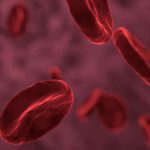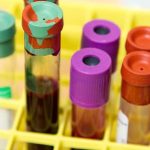Sickle Cell Anemia: What You Should Know
Sickle cell anemia, also often referred to as sickle cell disease, is an inherited genetic blood disorder. Roughly 100,000 Americans have sickle cell anemia. Sickle cell can be a puzzling disease, and there are often misconceptions about it. Below we take a look at what you should know about the disease.
What is sickle cell anemia?
Sickle cell anemia is a hereditary condition. Typically, you have enough healthy red blood cells to transport oxygen in your body. Normal red blood cells have a round shape and move freely within your blood vessels. With this disorder, your red blood cells are sickle-shaped instead of round. A sickle-shaped cell looks like the letter C backward.
In addition, the sickle cells become rigid and get stuck in smaller blood vessels. As a result, blood flow is blocked and oxygen does not reach parts of your body as needed. This, in turn, creates problems for your vascular — or blood flow — system.
Types of sickle cell anemia
There are several types of sickle cell disease based on the type of anemia-related genetics you inherit. Symptoms can range from mild to severe. For example, sickle cell anemia is a severe form of sickle cell disease. With this disease, you have two sickle cell genes, which means you have inherited the gene mutation from both parents.
Your doctor can perform blood tests to determine which type of sickle cell disease you have and the likelihood of passing the blood disorder along to your children. In many cases, you will also be referred for genetic counseling.
Signs and symptoms
The severity of the signs and symptoms can vary depending on the type of the disease. The more common signs include anemia-related fatigue, extreme pain (episodes called crises) that can continue a few hours to a few weeks, swelling of hands and feet, vision problems, chronic infections and delayed growth in children and infants. An increased risk of stroke due to impaired blood and oxygen flow is also associated with the disease.
Causes
A gene mutation causes sickle cell anemia. In particular, the gene that directs the production of hemoglobin in your body is mutated. Hemoglobin makes blood appear red and transports oxygen from your lungs to the rest of your body.
For a child to be born with this blood disorder, both the mother and father must pass on the hemoglobin gene mutation. If only one parent carries the abnormal gene, a child can inherit sickle cell trait — meaning the child can have both sickle cells and healthy blood cells. Though it’s uncommon to have symptoms with sickle cell trait, you can pass the gene along to your children.
Diagnosis
The diagnosis of sickle cell disease is made with a blood test. Your blood is screened for hemoglobin S, the gene mutation that causes sickle cell anemia. Depending on the results of your blood test, you may be sent for further tests. Your doctor will need to determine whether you’ve inherited gene mutations from one or both parents. In the United States, all newborn babies are screened for sickle cell.
Treatment
Treatment often focuses on relieving the symptoms associated with the disorder. Usually, treatment involves medications for relieving pain and treating infections. Blood transfusions can also be part of your treatment plan.
For those 16 years or younger, bone marrow transplants are sometimes performed to cure sickle cell anemia. The procedure can come with significant risks and finding a donor match can be difficult.
Living with sickle cell anemia
Though living with this disease presents challenges, it’s possible to engage in many regular activities and enjoy a fairly normal life. Managing your medical condition with an emphasis on preventing symptoms is important, so seek regular care from a knowledgeable doctor. This can help you manage pain associated with the disorder and learn about clinical trials.
Try to eat healthy food, drink plenty of water, stay well-rested and participate in physical activity. Keeping your immune system as strong as possible can help ward off infections.
You may also find that talking to someone helps. Support groups or therapy can be beneficial in finding support and living with sickle cell anemia.
Treatment for blood disorders in Raleigh
Sickle cell anemia is often misunderstood by those with the disorder or those afraid of passing along sickle cell traits to their children. Speaking to a hematologist, a doctor who specializes in blood disorders, can help answer your questions and make a plan for managing your medical condition.
Personalized Hematology-Oncology provides comprehensive hematology and oncology consultation for all types of blood disorders, including sickle cell disease. Contact us to learn more about our expertise in hematology conditions.






